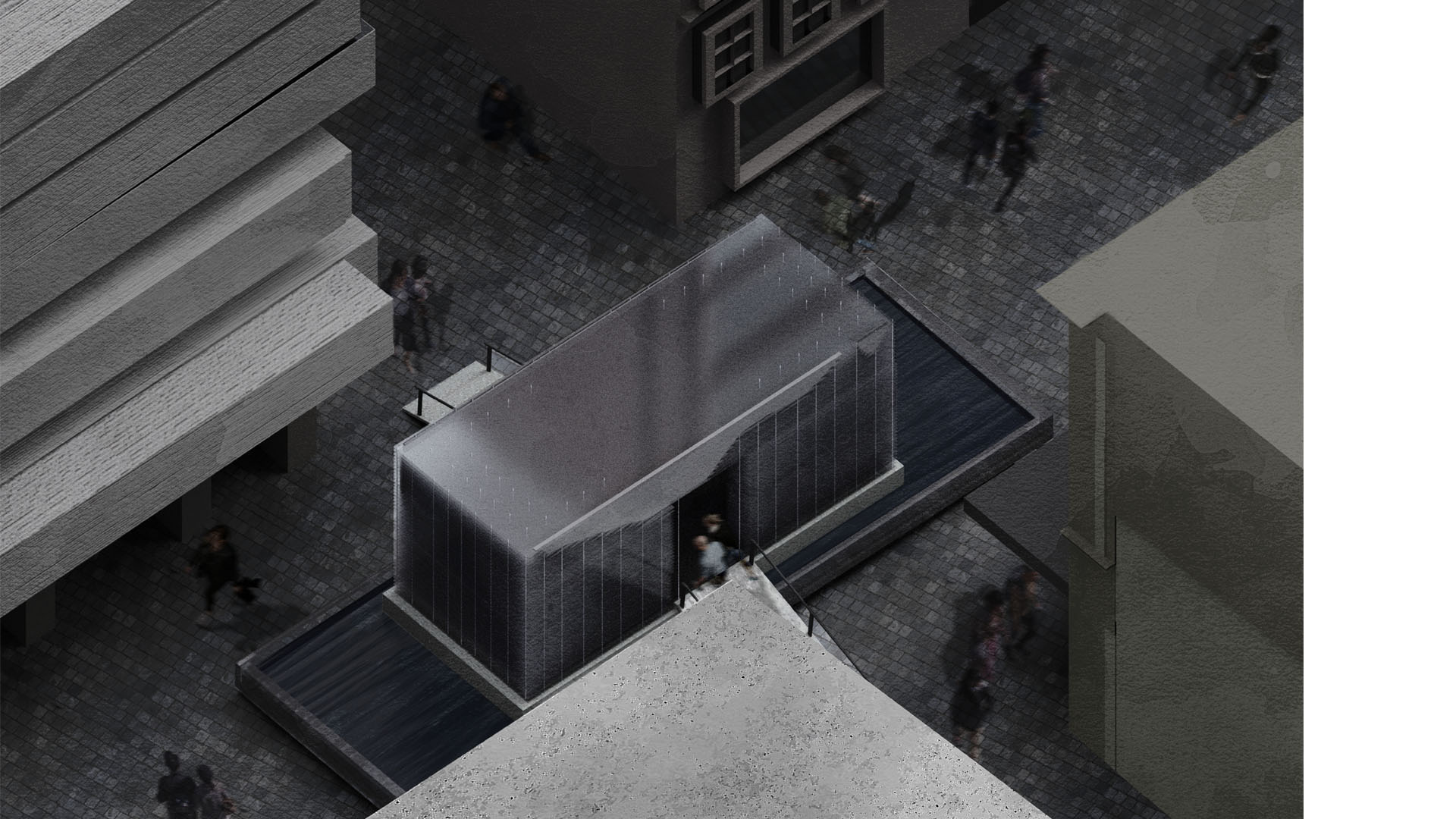

How could the unprecedented narrative of the Fort Street District stimulate a community experience? How can we understand the conflict between Fort Street’s past and present? Heritage speaks to the social-cultural and material conditions of a site. I chose to explore how it can be used as a mechanism to highlight, orientate, articulate, or contrast spatial practices in a central city context. When traversing the streets, there seems to be very little knowledge of what narratives lie beneath faddishly-changing surfaces. I propose a floating pavilion that ties various delineated passages together into one memorable scene. Walking through the semi-transparent structure of this pavilion you will discover small cinematic frames that reveal past lives of the site. This is my attempt to restore memories of the Fort District atmospherically and metaphysically.
My idea is to design an immersive heritage site, using visual and physical moments to restore the memory of what once was. The Fort District Pavilion is an homage to the site, establishing a sense of connection between dispersed communities in the present and the site’s rich history. This pavilion will widen the scope of people’s interaction by going beyond a simple moment of pause, to give individuals and communities the opportunity to perform ‘across time’ in the fabrication of memory and identity. When entering the pavilion, the spatial transition from present to past is articulated by a channel of water. As the visitor crosses this channel, recorded sounds of the ocean will play, recalling the former shoreline in this location. Moving forward, the lines of the structure guide users forward and frame blurred and partial views of the city. Narrow image boxes are found slotted into voids. Looking inside, visitors transition again. The boxes block out the surrounding context and focus on the moving image with supporting sound - providing the sense of ‘time-travel’.


